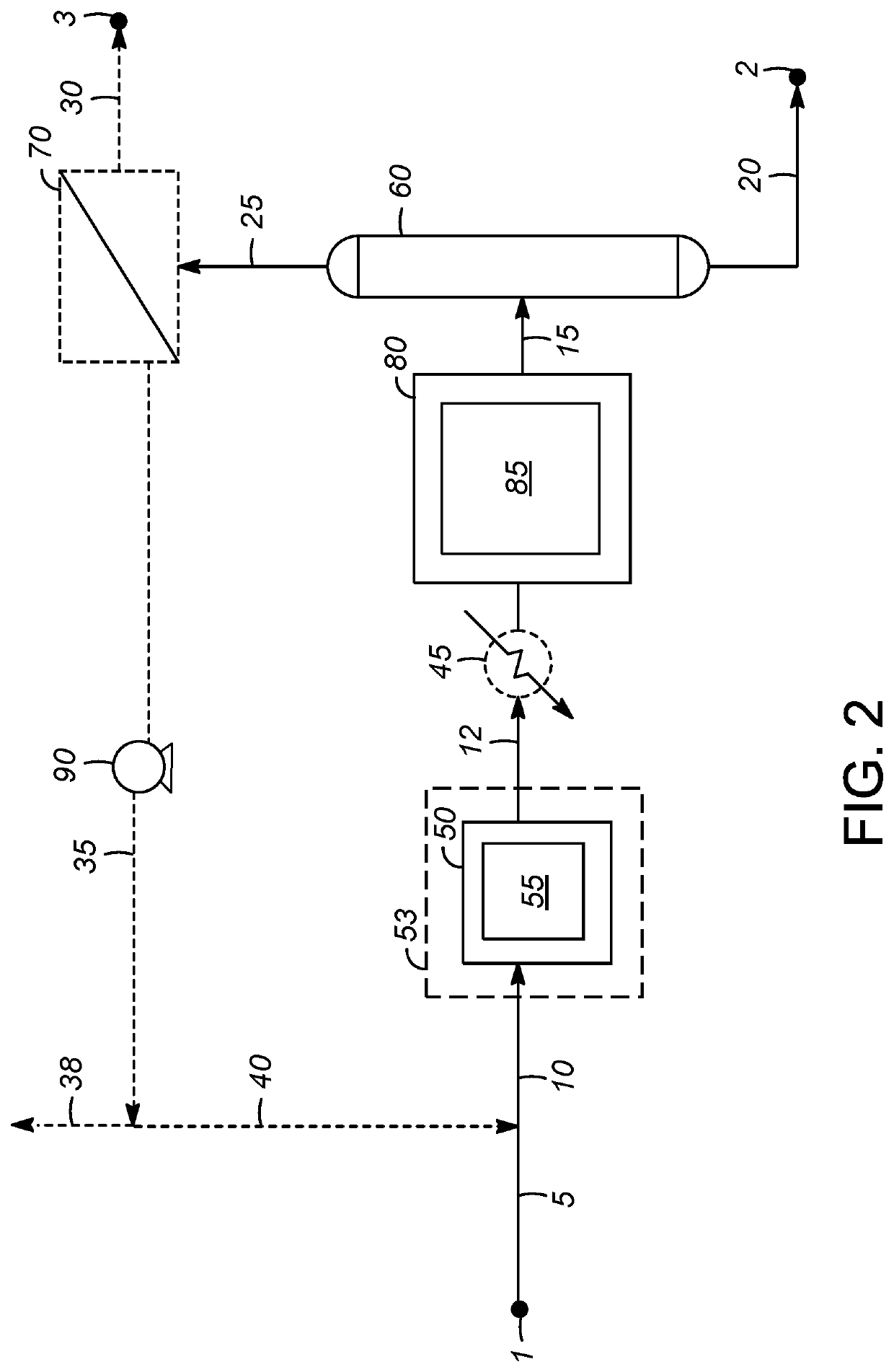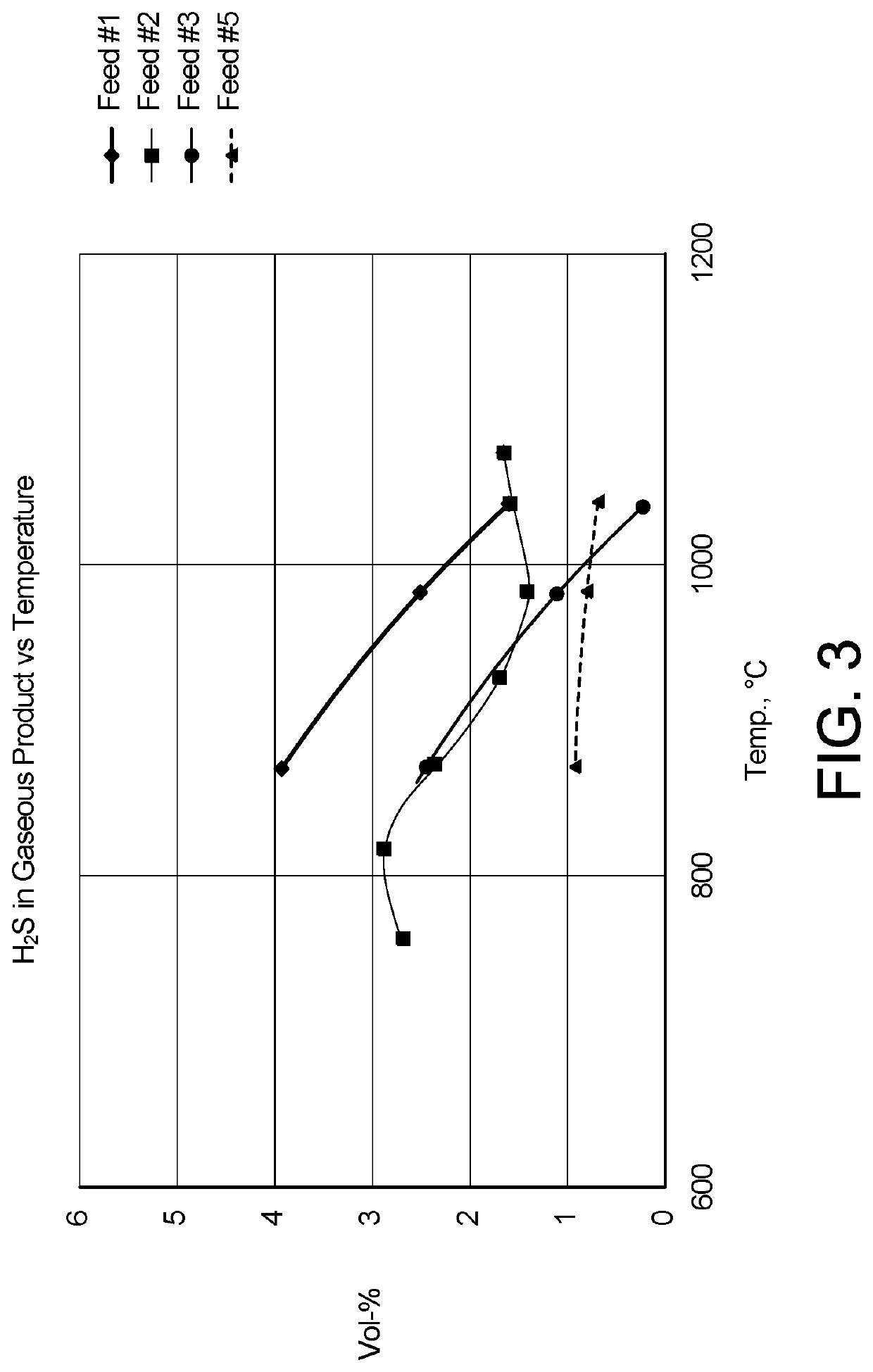Production of liquids and reduced sulfur gaseous products from sour natural gas
a technology of sulfur gaseous products and liquids, which is applied in the direction of gaseous fuels, hydrocarbon preparation catalysts, bulk chemical production, etc., can solve the problems of significant complexity and cost, and achieve the effect of increasing carbon number, significant complexity and cos
- Summary
- Abstract
- Description
- Claims
- Application Information
AI Technical Summary
Benefits of technology
Problems solved by technology
Method used
Image
Examples
embodiment
Representative Embodiment
[0063]FIGS. 1 and 2 illustrate representative processes in which a feedstock comprising methane and H2S 10 is fed or input to DHA reaction stage (e.g., DHA reactor) 50 to recover liquid product 20 comprising one or more aromatic hydrocarbons and one or more organic sulfur compounds. Any of the conditions, catalysts, performance criteria, and product quality aspects, as well as recycle operation aspects, as described above are applicable to these representative processes. DHA reaction stage 50 comprises DHA catalyst 55, used to convert methane and H2S in feedstock 10 by soft oxidation and dehydroaromatization. DHA effluent 12, withdrawn from DHA reaction stage 50, is fed to separator 60 that performs the separation of liquid product 20 from methane-containing gaseous product 25. As shown in FIG. 1, optional effluent cooler 45 may be used to provide the DHA effluent to separator 60 as cooled DHA effluent 15. In general, some or all of DHA effluent 12 can be fe...
example 1
[0069]Pilot plant scale experiments were performed, in order to investigate the conversion of sour natural gas feedstocks directly to liquid and gaseous products, separated from the effluent of a methane DHA reactor. The compositions of these model feedstocks are shown in Table 1.
[0070]
TABLE 1Model Sour Natural Gas FeedstocksCom-ponent,FEED #1FEED #2FEED #3FEED #4FEED #5vol-%“Dry”“Wet”“Low CO2”“High CO2”“Low H2S”CH495.070.065.661.873.0C2H6020.018.817.620.0C3H805.04.74.45.0H2S5.05.04.74.42.0CO2006.211.80
[0071]From an initial screening of various possible catalyst types for their activity to catalyze soft oxidation and dehydroaromatization, a catalyst comprising sulfided CoMo on an alumina support was found to exhibit stable activity over a 7-day testing period with reproducible results. No increase in pressure drop across the catalyst bed was observed, indicative of the absence of any appreciable coking that would otherwise initiate plugging of the catalyst bed. This catalyst, as wel...
PUM
| Property | Measurement | Unit |
|---|---|---|
| absolute pressure | aaaaa | aaaaa |
| temperature | aaaaa | aaaaa |
| absolute pressure | aaaaa | aaaaa |
Abstract
Description
Claims
Application Information
 Login to View More
Login to View More - R&D
- Intellectual Property
- Life Sciences
- Materials
- Tech Scout
- Unparalleled Data Quality
- Higher Quality Content
- 60% Fewer Hallucinations
Browse by: Latest US Patents, China's latest patents, Technical Efficacy Thesaurus, Application Domain, Technology Topic, Popular Technical Reports.
© 2025 PatSnap. All rights reserved.Legal|Privacy policy|Modern Slavery Act Transparency Statement|Sitemap|About US| Contact US: help@patsnap.com



